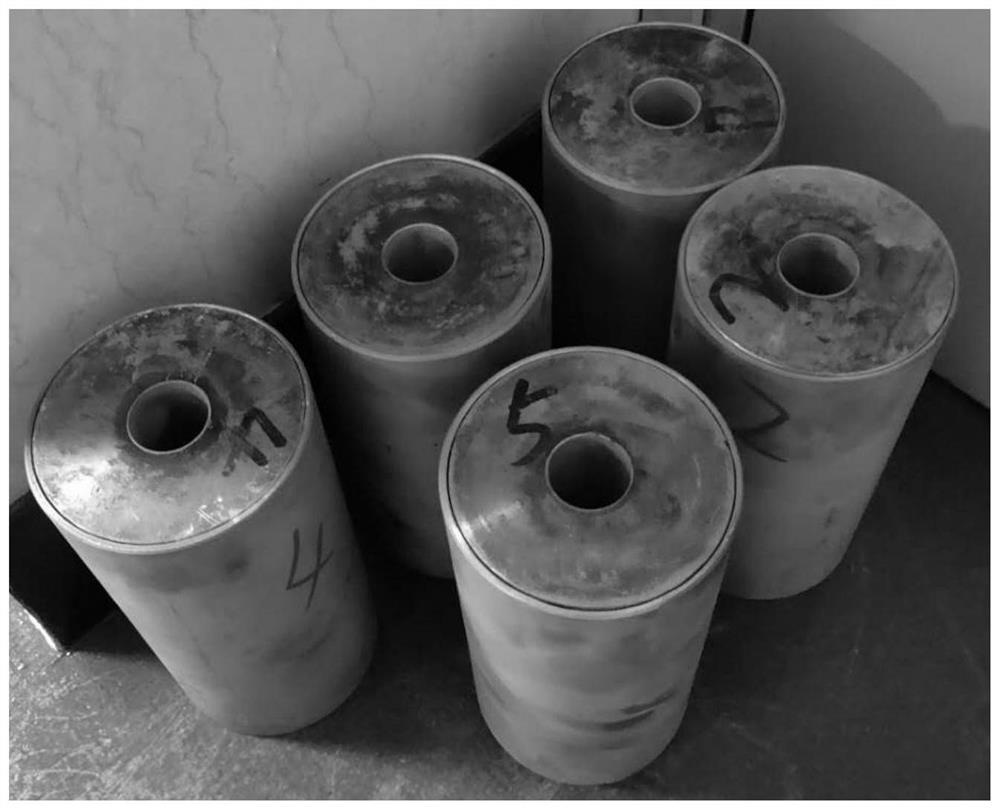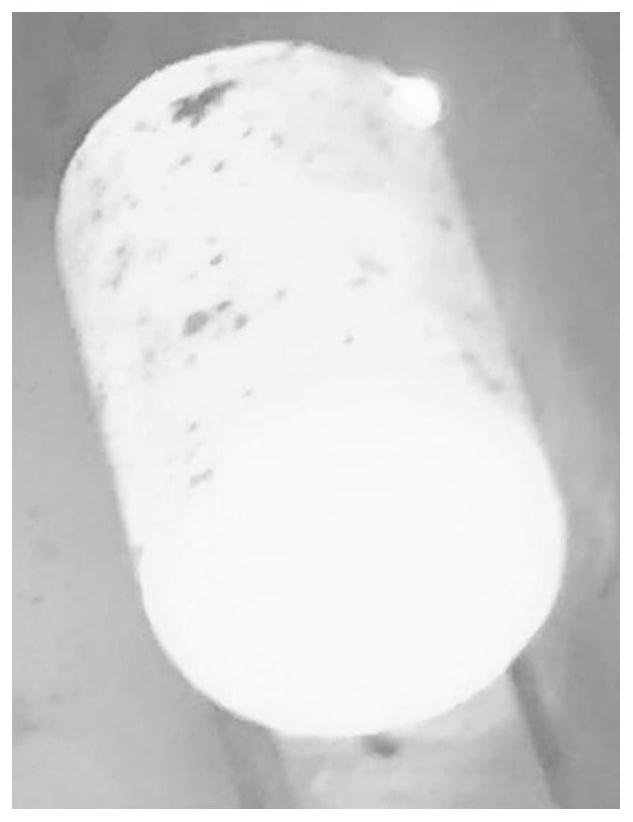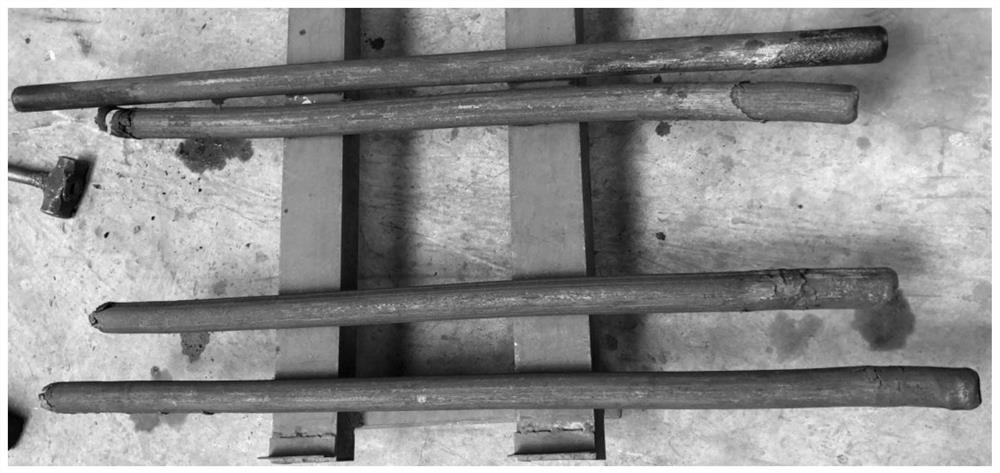Preparation and molding process of a high-strength nickel-cobalt-based alloy pipe
A nickel-cobalt-based alloy and forming technology, applied in the field of superalloys, can solve the problems of alloy processing performance, increase alloy red hardness, etc., achieve excellent high temperature strength properties, reduce adverse effects, and improve corrosion/oxidation resistance. Effect
- Summary
- Abstract
- Description
- Claims
- Application Information
AI Technical Summary
Problems solved by technology
Method used
Image
Examples
preparation example Construction
[0029] A preparation and molding process of a high-strength nickel-cobalt-based alloy pipe, including five steps of alloy smelting, homogenization treatment, pre-rolling treatment, high-temperature hot rolling, and heat treatment, specifically as follows:
[0030] 1) Alloy smelting: by mass percentage, take Cr: 17-20%, Co: 27-30%, Ti: 1.5-3.5%, Al: 3.0-4.5%, W: 3.0-9.0%, Mo: ≤1.0 %, Nb: 0.5~1.0%, Ta: ≤1.0%, Si: ≤0.5%, Mn: ≤0.5%, C: 0.04~0.07%, B: ≤0.003%, Zr: 0.01~0.03%, Hf: 0.05 ~0.15%, the balance is Ni;
[0031] Induction electric arc furnace is used for smelting, and the vacuum degree is controlled within the range of 0.3-0.5Pa. After Cr, Co, Ni, W, Nb and other elements are completely melted, it is refined for 0.5-1h, and Al, Ti, B, Zr and C, to obtain alloy ingots; wherein, when the alloy is smelted, the magnesium oxide basic furnace lining is used, the furnace is washed with pure nickel before smelting, and the alloy raw material is added before shot blasting;
[0032...
Embodiment 1
[0039] According to the alloy composition, the content of each element meets the following requirements by mass percentage: Cr: 17%, Co: 28%, Ti: 1.5%, Al: 4.5%, W: 9.0%, Nb: 1.0%, Si: 0.15 %, Mn: 0.2%, C: 0.07%, B: 0.003%, Zr: 0.02%, Hf: 0.1%, and the balance is Ni. Alloy smelting adopts magnesium oxide basic furnace lining, and pure nickel is used to wash the furnace before smelting, and shot blasting is carried out before alloy raw materials are added. The alloy is smelted in an induction arc furnace, and the vacuum degree is controlled at 0.35Pa. After Cr, Co, Ni, W, Nb and other elements are completely melted, it is refined for 40 minutes, and high-purity Argon protection;
[0040] Heat the alloy ingot at a rate of 10°C / min to 950°C and keep it warm for 0.5 hours, then continue to heat up and perform continuous homogenization treatment at 10, 30, and 50°C above the γ' solid solution temperature for 12, 12, and 24 hours, and air cool after completion to room temperature....
Embodiment 2
[0043] According to the alloy composition, the content of each element meets the following requirements by mass percentage: Cr: 18%, Co: 30%, Ti: 3.5%, Al: 3.5%, W: 3.0%, Nb: 1.0%, Ta: 1.0 %, Si: 0.15%, Mn: 0.25%, C: 0.07%, B: 0.002%, Zr: 0.03%, Hf: 0.1%, and the balance is Ni. Alloy smelting adopts magnesium oxide basic furnace lining, and pure nickel is used to wash the furnace before smelting, and shot blasting is carried out before alloy raw materials are added. The alloy is smelted in an induction arc furnace, and the vacuum degree is controlled at 0.35Pa. After Cr, Co, Ni, W, Nb and other elements are completely melted, it is refined for 40 minutes, and high-purity Argon protection;
[0044] Heat the alloy ingot at a rate of 10°C / min to 950°C and keep it warm for 0.5 hours, then continue to heat up and perform continuous homogenization treatment at 10, 30, and 50°C above the γ' solid solution temperature for 12, 12, and 24 hours, and air cool after completion to room t...
PUM
| Property | Measurement | Unit |
|---|---|---|
| thickness | aaaaa | aaaaa |
| thickness | aaaaa | aaaaa |
| compressive yield strength | aaaaa | aaaaa |
Abstract
Description
Claims
Application Information
 Login to View More
Login to View More - R&D
- Intellectual Property
- Life Sciences
- Materials
- Tech Scout
- Unparalleled Data Quality
- Higher Quality Content
- 60% Fewer Hallucinations
Browse by: Latest US Patents, China's latest patents, Technical Efficacy Thesaurus, Application Domain, Technology Topic, Popular Technical Reports.
© 2025 PatSnap. All rights reserved.Legal|Privacy policy|Modern Slavery Act Transparency Statement|Sitemap|About US| Contact US: help@patsnap.com



